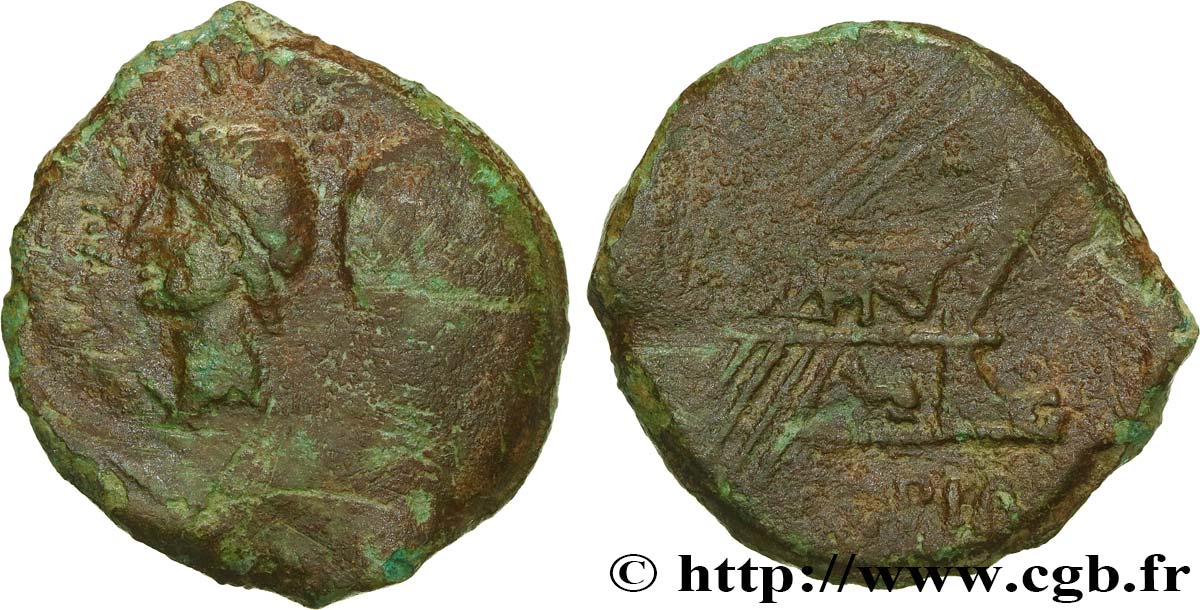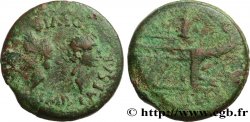Live auction - brm_684889 - LUGDUNUM - LYON - JULIUS CAESAR and OCTAVIAN Dupondius
You must signin and be an approved bidder to bid, LOGIN TO BID. Accounts are subject to approval and the approval process takes place within 48 hours. Do not wait until the day a sale closes to register. Clicking on "BID" constitutes acceptance of the terms of use of cgb.fr private live auctions.
Bids must be placed in whole Euro amounts only. The sale will start closing at the time stated on the item description; any bids received at the site after the closing time will not be executed. Transmission times may vary and bids could be rejected if you wait until the last second. For further information check the Live auction FAQ
All winning bids are subject to a 18% buyer’s fee.
All winning bids are subject to a 18% buyer’s fee.
| Estimate : | 450 € |
| Price : | no bid |
| Maximum bid : | no bid |
| End of the sale : | 03 August 2021 15:17:09 |
Type : Dupondius
Date: c. 38 AC.
Mint name / Town : Lyon
Metal : copper
Diameter : 29,5 mm
Orientation dies : 9 h.
Weight : 14,21 g.
Rarity : R3
Coments on the condition:
Monnaie centrée. Jolis portraits. Usure importante mais régulière. Patine marron-vert
Catalogue references :
Obverse
Obverse legend : IMP./ CAESAR./ DIVI.IVLI./ DIVI. F..
Obverse description : Tête d'Octave nue à droite, adossée à la tête de César laurée à gauche .
Obverse translation : “Imperator/ Cæsar/ Divi Iuli/ Divi Filii”, (L’imperator/ césar/ divin Jules/ fils du divin).
Reverse
Reverse legend : COPIA.
Reverse description : Proue de navire à droite ornée d’un œil et d’un dauphin ; un astre au-dessus.
Reverse translation : “Copia”, (Copia).
Commentary
Un symbole est visible entre les deux têtes (une étoile, le Sidus Julium ?). Ce type semble beaucoup plus rare que ne le laissent supposer les ouvrages généraux ! Seulement deux exemplaires étaient recensés en 1983 par J.-B. Giard (Musées de Berlin et du Vatican).








 Report a mistake
Report a mistake Print the page
Print the page Share my selection
Share my selection Ask a question
Ask a question Consign / sell
Consign / sell
 Full data
Full data




